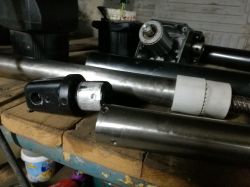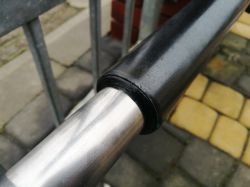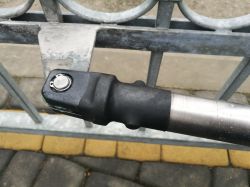Hi,
I have faac 414 gate automats. The simmering in the tube arm has solidified and it releases water to the screw mechanism, which causes problems in deeper frosts. Does anyone know to disassemble the piston and housing so that they can remove the seal?
Added after 3 [hours] 11 [minutes]:
I don't know if you are allowed to answer yourself, but I have solved the problem and I want to share it with those who may need it in the future.
Disassemble the horn arm from the motor body and then remove the simmering sealing the stainless piston. First the rubber and then the metal ring, I don't know if they are separate parts or if it was originally one simmering, but it fell apart from old age. After removing the ring, vigorously tug both parts of the tube several times to knock out the Teflon sleeve that is under the simmer. Voila!
I have faac 414 gate automats. The simmering in the tube arm has solidified and it releases water to the screw mechanism, which causes problems in deeper frosts. Does anyone know to disassemble the piston and housing so that they can remove the seal?
Added after 3 [hours] 11 [minutes]:
I don't know if you are allowed to answer yourself, but I have solved the problem and I want to share it with those who may need it in the future.
Disassemble the horn arm from the motor body and then remove the simmering sealing the stainless piston. First the rubber and then the metal ring, I don't know if they are separate parts or if it was originally one simmering, but it fell apart from old age. After removing the ring, vigorously tug both parts of the tube several times to knock out the Teflon sleeve that is under the simmer. Voila!






